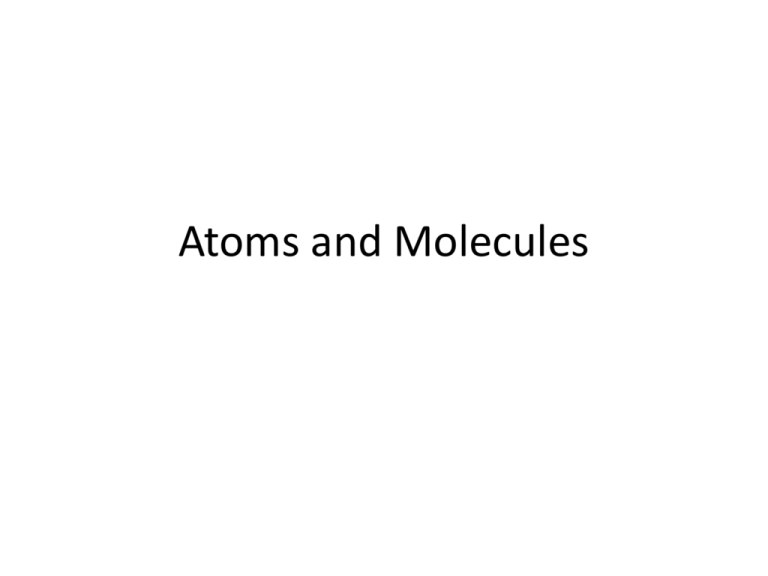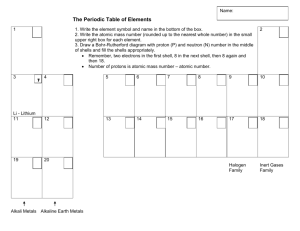Atoms and Molecules
advertisement

Atoms and Molecules Protons, Neutrons and Electrons Protons Found in Charge # of each Type of element nucleus +1 Same as electrons Determines atomic number Proton Neutron Electron Neutrons nucleus Electrons Orbiting the nucleus neutral -1 Can vary Same as protons What’s wrong with this atom? Proton Neutron Electron A. Too many neutrons B. # of particles in nucleus is the same as the electron # C. Too many electrons D.Too many protons What element is this? Proton Neutron Electron A. Helium B. Carbon C. Oxygen D.Not enough information to determine What element is this? A. Carbon B. Beryllium C. Magnesium Isotopes • The atomic number tells you the number of protons in the nucleus • Each type of atom has a different atomic number and is a different element • As of 2011, there are 118 elements. • While the proton # determines the element, each element can have varying #’s of neutrons. These are called isotopes Examples of Isotopes Examples of Isotopes Chemical Bonds • Electrons are organized into layers called shells surrounding the nucleus • The first shell can hold 2 electrons, the second shell can hold 8, and all additional shells can hold 8 electrons in the outer shell • Atoms that have 8 electrons in their outer shell are stable and normally do not form bonds • Atoms that do not have 8 electrons in their outer shell will form chemical bonds with other atoms to fill their outer shell and become stable Examples of Stable Atoms Ionic Bonds • An atom may steal an electron from another to fill its outer shell. • The atom that loses the electron also ends up with a full outer shell • The atom that stole the electon now has more electrons than protons and becomes a negatively charged ion • The atom that lost the electron now has more protons than electrons and becomes a positively charged ion • Both atoms are attracted and bond to each other because of their opposite charges Examples of Ionic Bonds 9P 9P 3P 3P Examples of Ionic Bonds Covalent Bonds • Two atoms may share electrons in their outer in order to fill their outer shell - remember: 2 electrons in the first shell and 8 in all others Examples of Covalent Bonds Hydrogen now has a full outer shell: 2 electrons Chlorine now has a full outer shell: 8 electrons Water forms through covalent bonds Oxygen has 6 electrons in How many hydrogen atoms its outer shell. does oxygen need to share Hydrogen has one electron How many more does it in its outer shell. need with to fill its outer shell? to be stable? How many more does it need to be stable?




